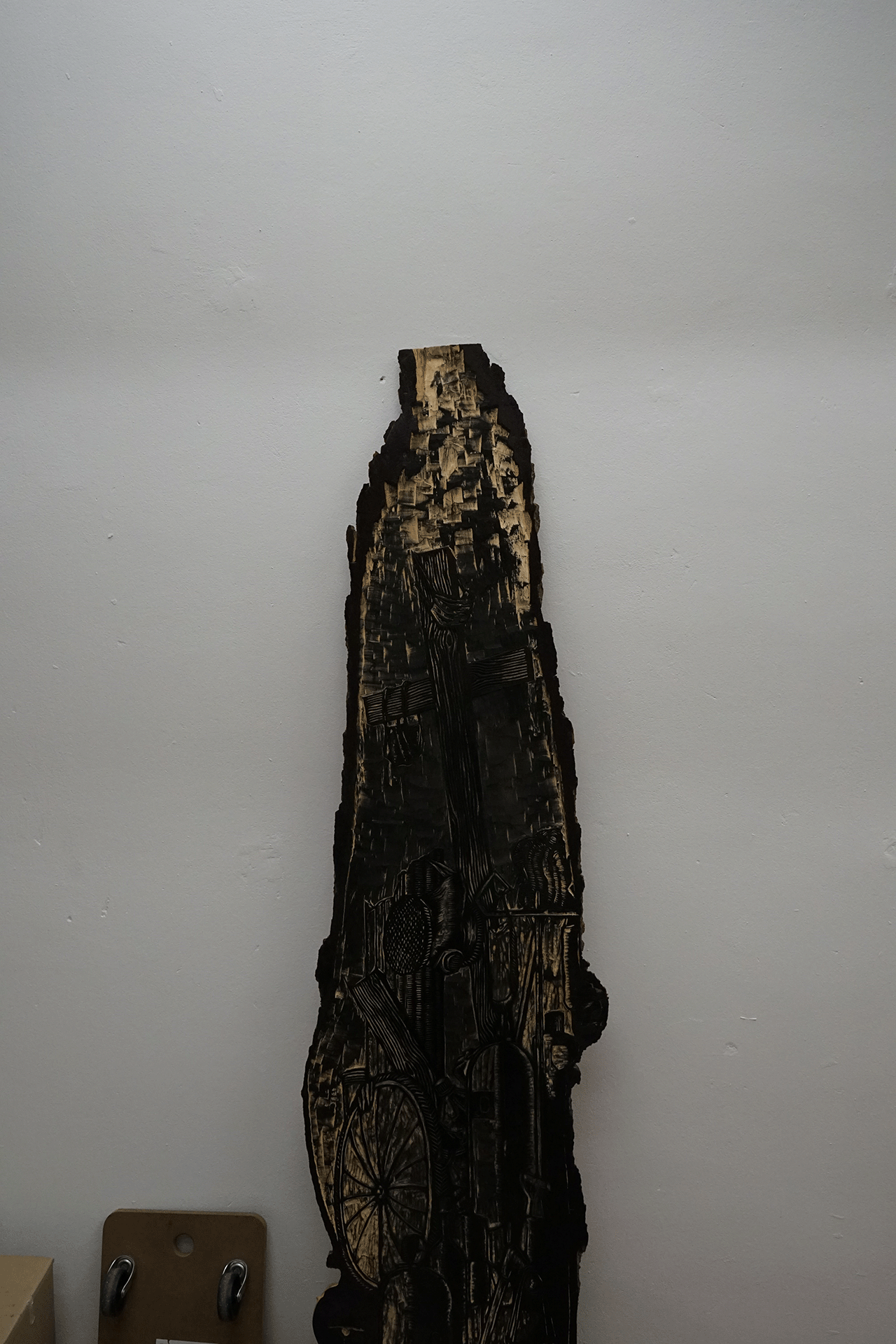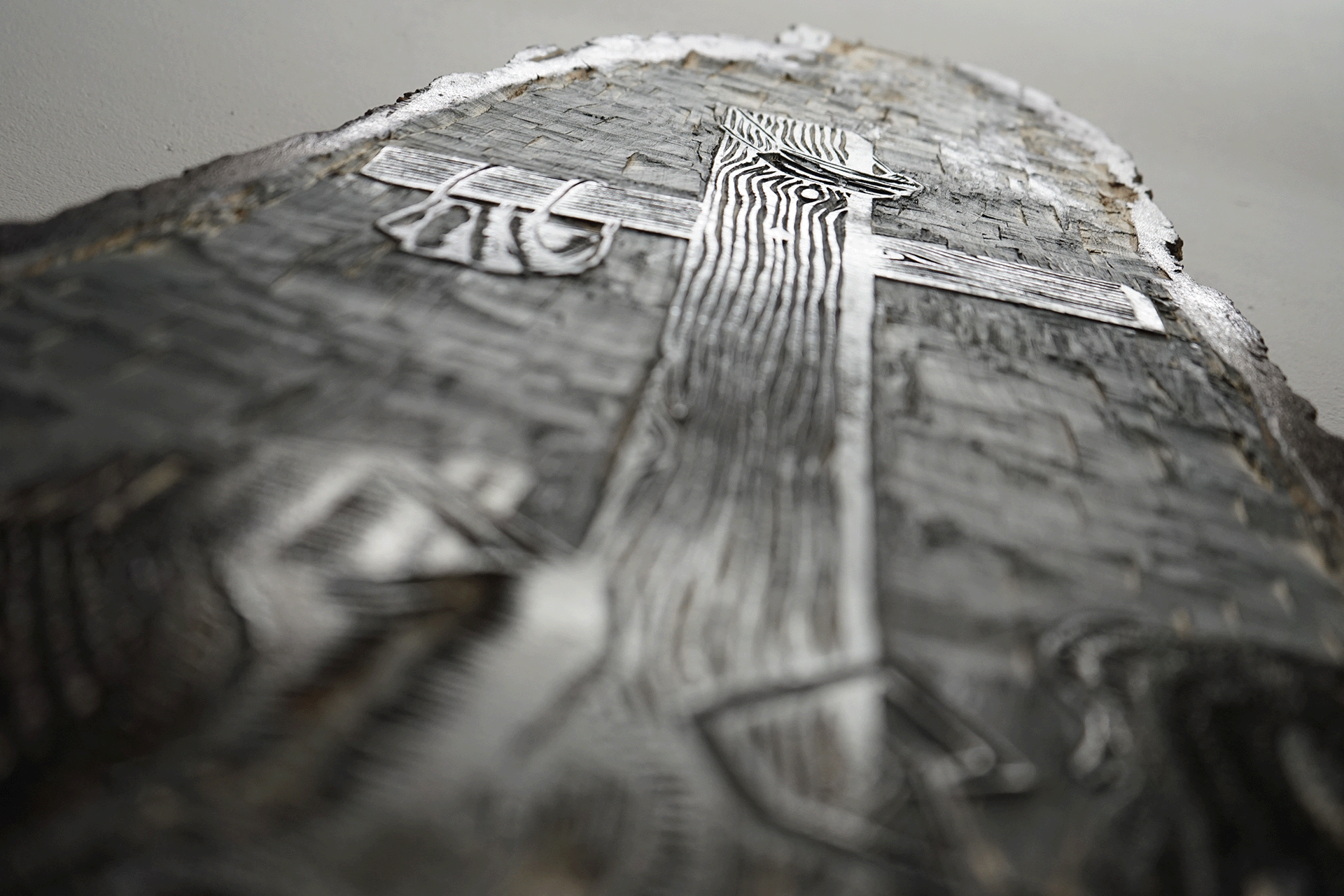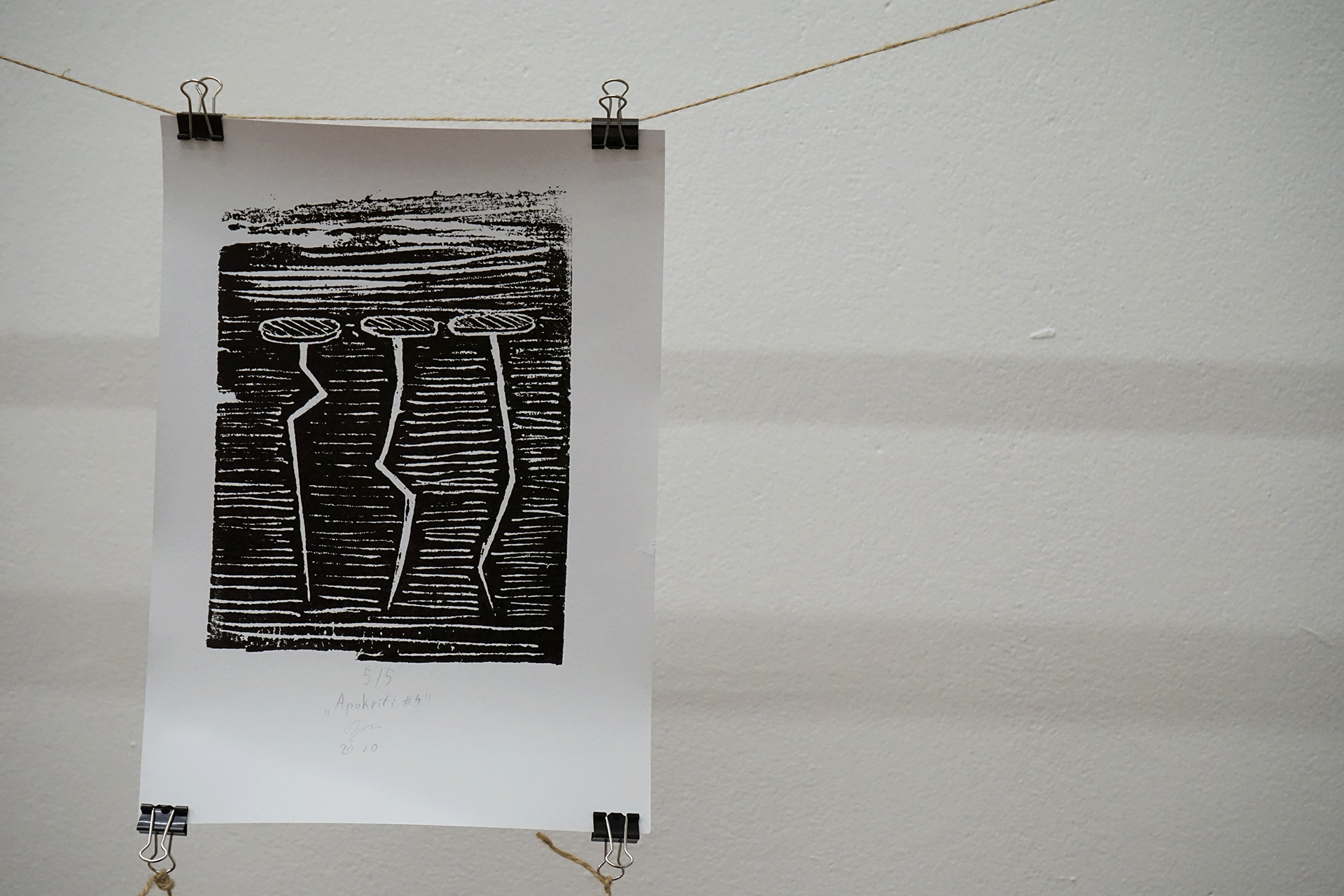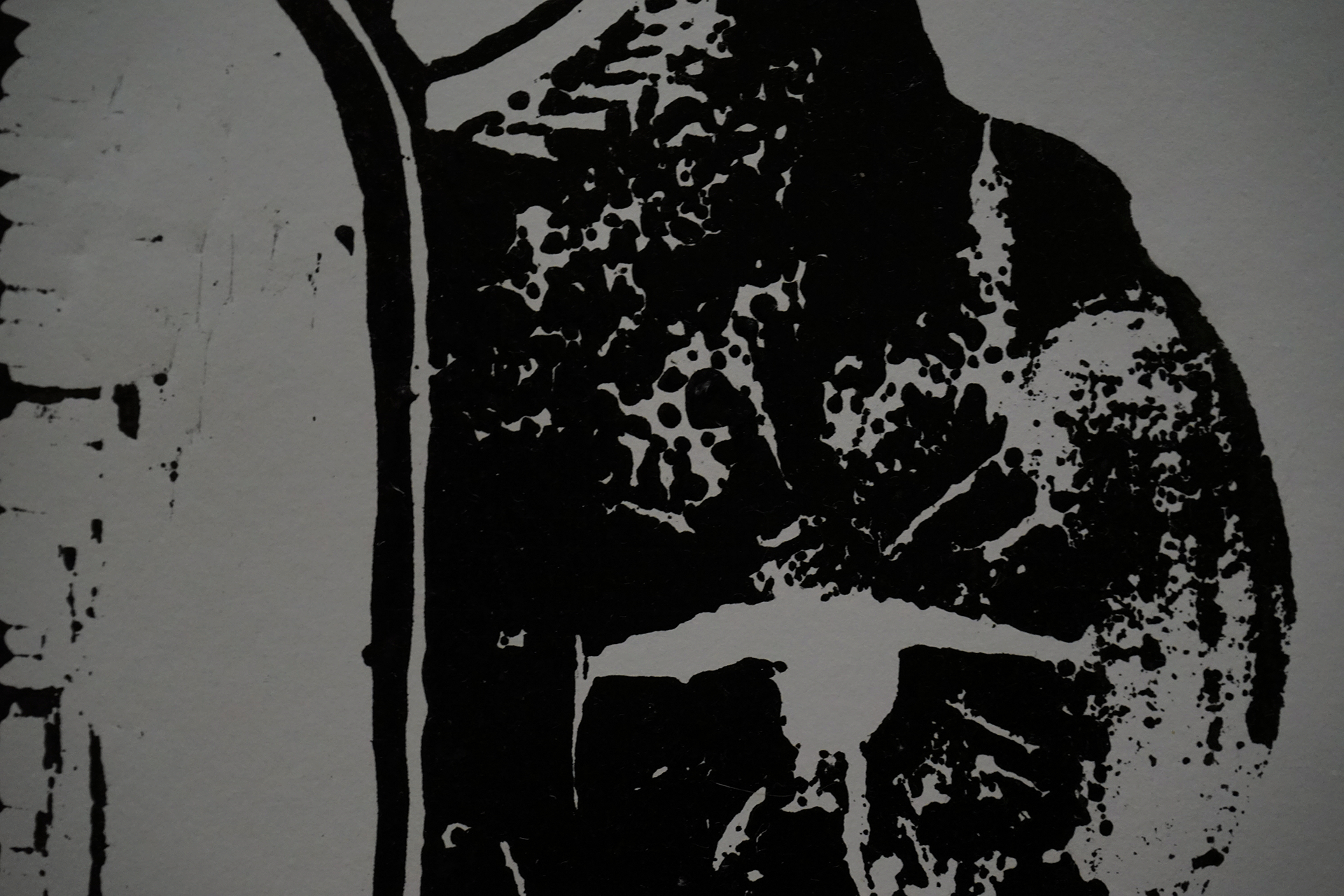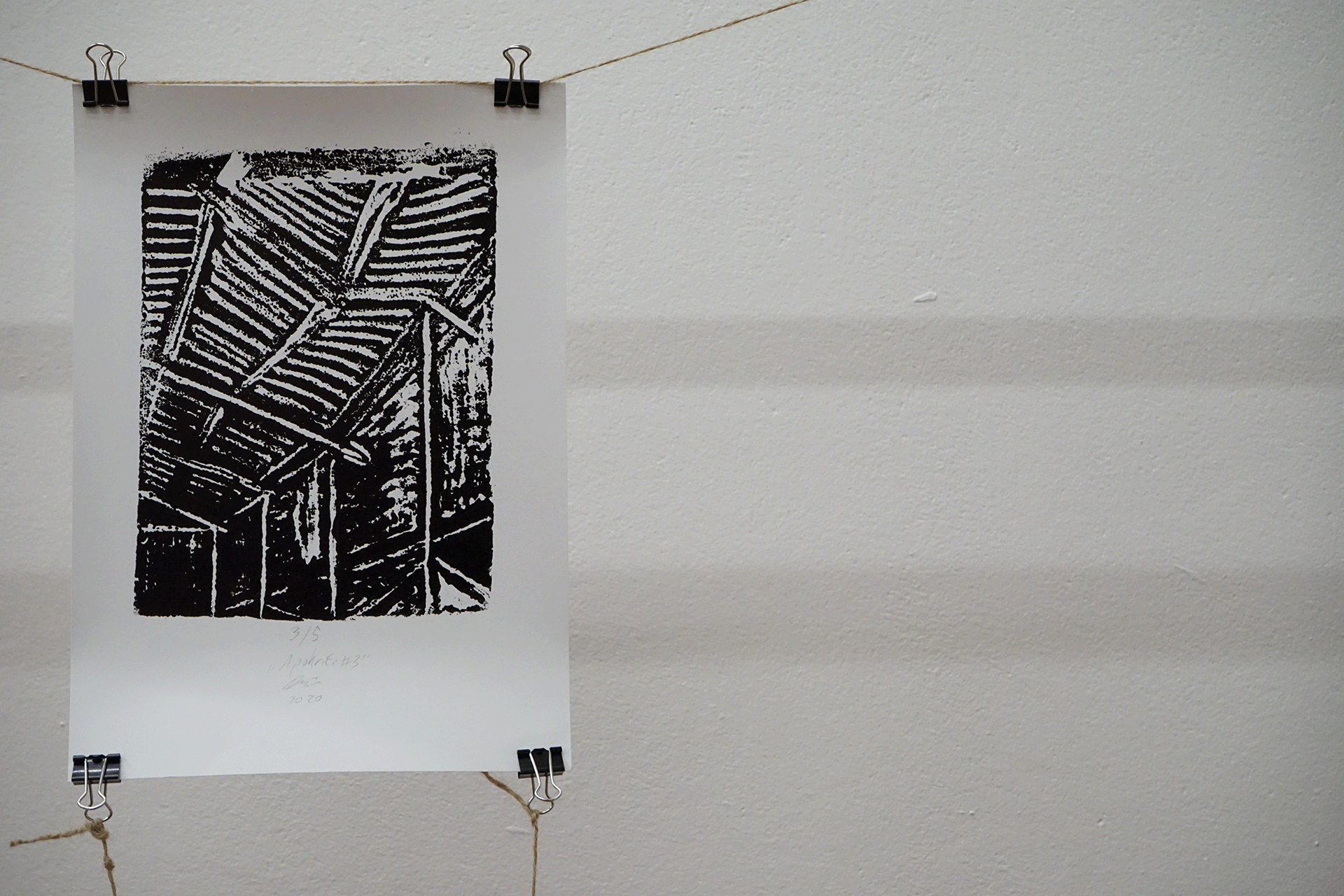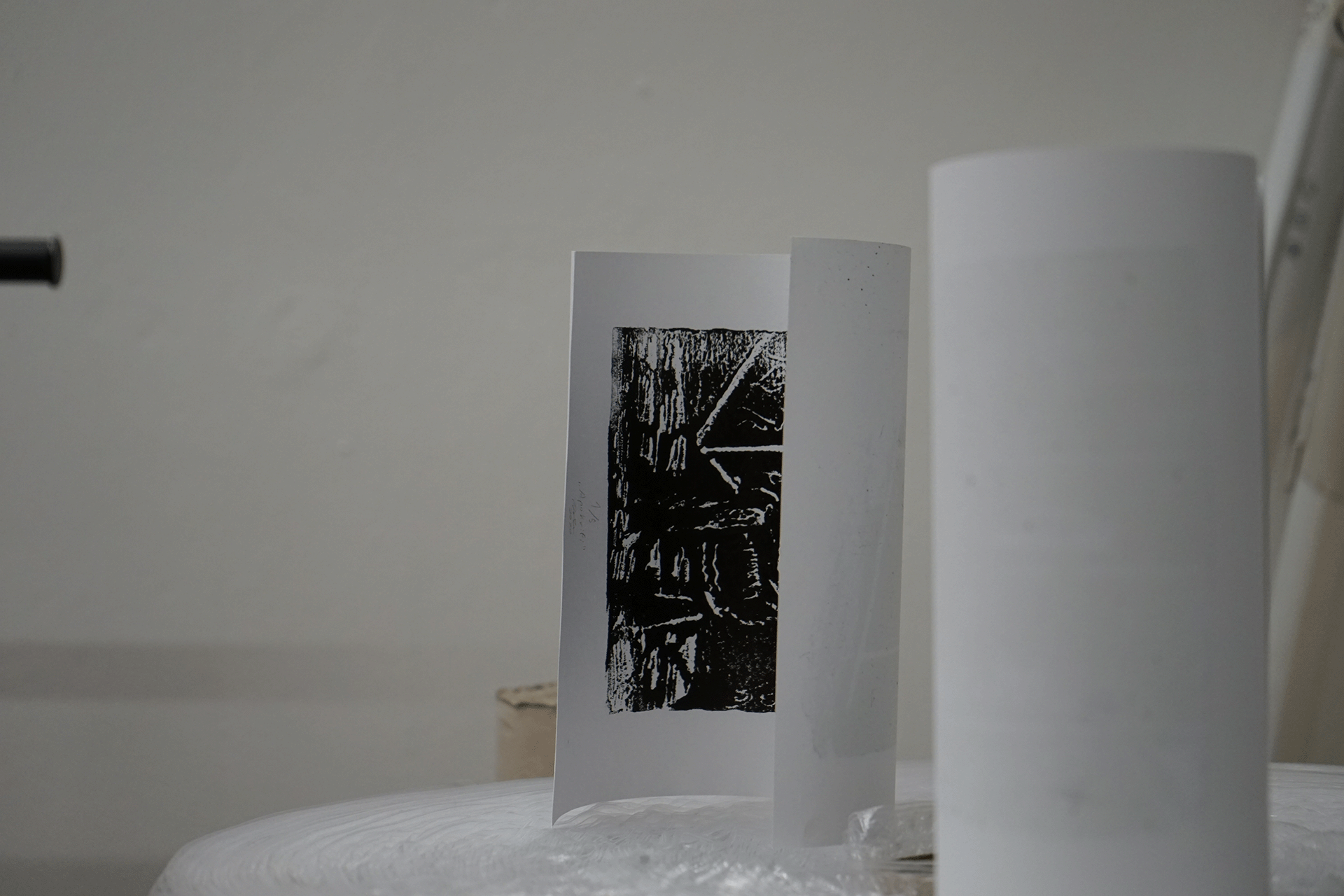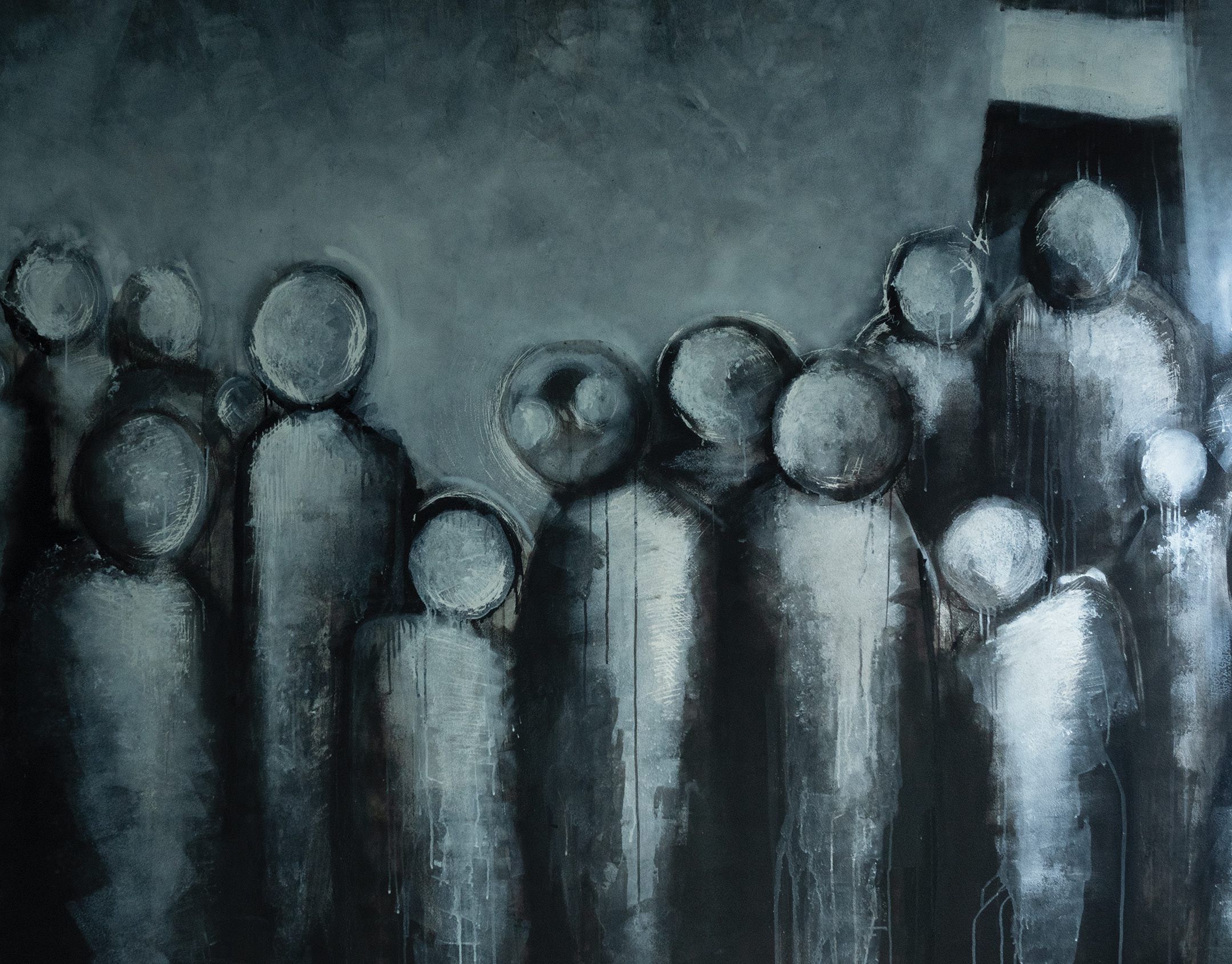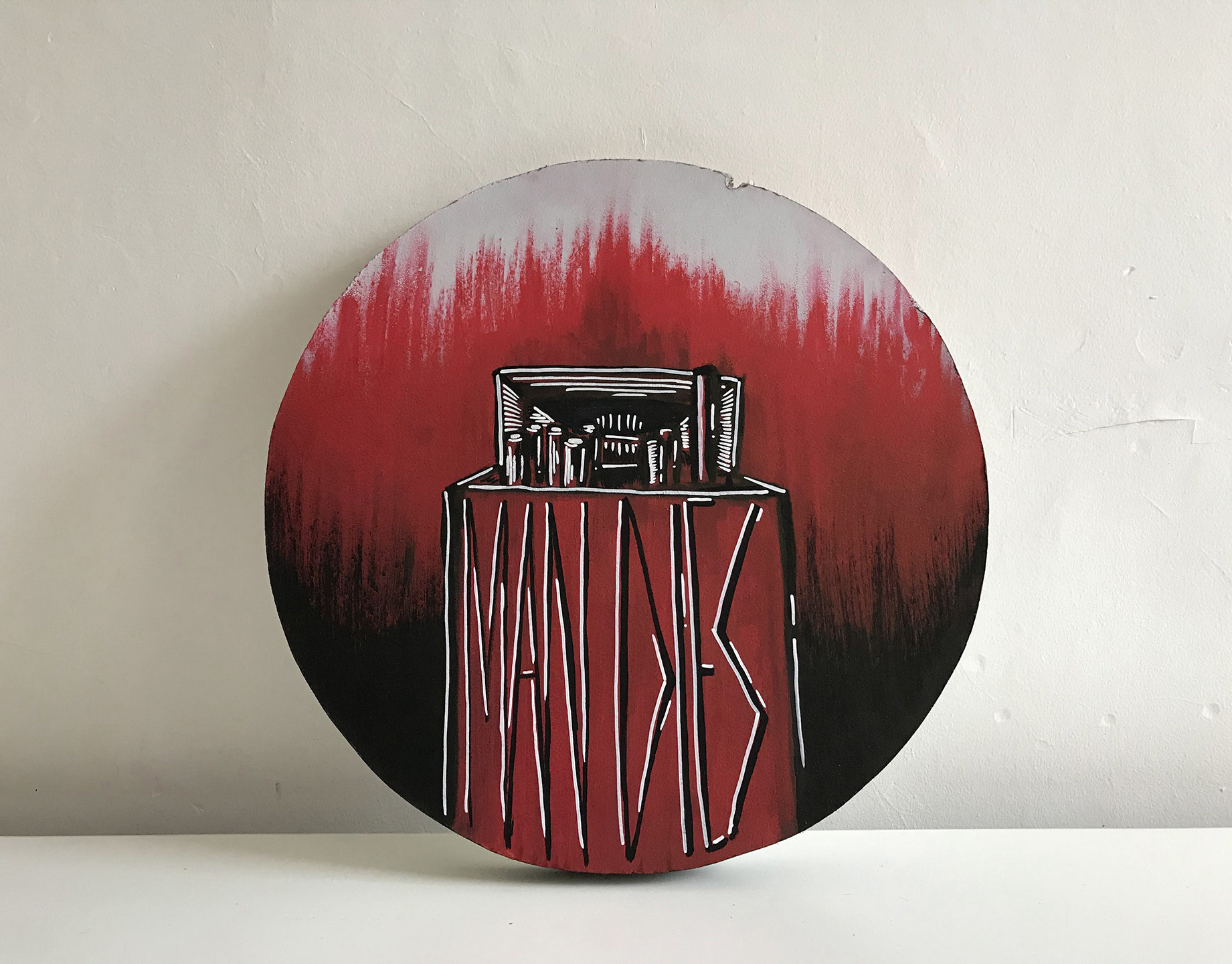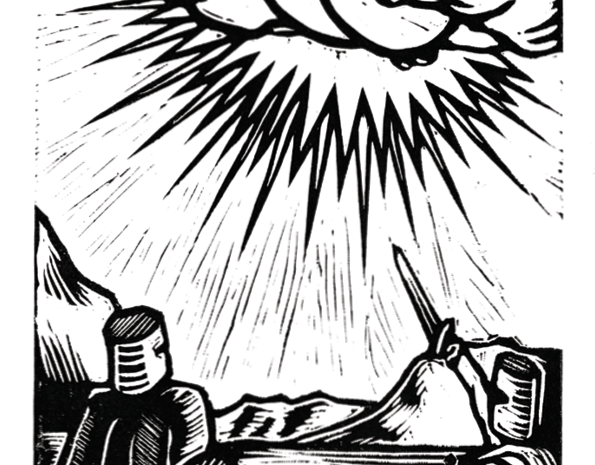SK
Hlavnou časťou tohto diela je morový stĺp postavený zo všetkého toho bordelu čo nás niekoľkonásobne prežije. Keď nám raz to prežívanie nevyjde, neostanú po nás z trosiek trčať monumenty a pamätníky, ale skládky. Skládky plné vecí, ktoré nás mali zachrániť.
Dies Irae (’’dni hnevu’’) je gregoriánsky žalospev najčastejšie používaný na pohreboch. Jeho text opisuje posledné dni ľudstva, posledný súd. V klasickej hudbe je často parafrázovaný práve pre svoju skľučujúcu melódiu a atmosféru. Tento názov zdôrazňuje moju snahu zachytiť práve bez časnosť, samotu, pocit blížiaceho sa konca a odráža aj atmosféru poslednej svetovej pandémie.
Dies Irae (’’dni hnevu’’) je gregoriánsky žalospev najčastejšie používaný na pohreboch. Jeho text opisuje posledné dni ľudstva, posledný súd. V klasickej hudbe je často parafrázovaný práve pre svoju skľučujúcu melódiu a atmosféru. Tento názov zdôrazňuje moju snahu zachytiť práve bez časnosť, samotu, pocit blížiaceho sa konca a odráža aj atmosféru poslednej svetovej pandémie.
EN
The main part of this work is a plague column, built out of all the waste that will out live us a few times over. When the surviving finally doesn't pan
out, there won't be monuments sticking out from underneath the rubble, but piles and piles of garbage that was meant to save us.
Dies Irae ('' the days of wrath'') is an old Gregorian chant, mainly used at funerals. It's text describes the end of humanity, and the last judgement. In classical music, it's often paraphrased for it's unsettling melody and dreary tone. This title underscores my effort to capture the , stillness, isolation and
a feeling of impending doom accompanying the latest world pandemic.
out, there won't be monuments sticking out from underneath the rubble, but piles and piles of garbage that was meant to save us.
Dies Irae ('' the days of wrath'') is an old Gregorian chant, mainly used at funerals. It's text describes the end of humanity, and the last judgement. In classical music, it's often paraphrased for it's unsettling melody and dreary tone. This title underscores my effort to capture the , stillness, isolation and
a feeling of impending doom accompanying the latest world pandemic.
